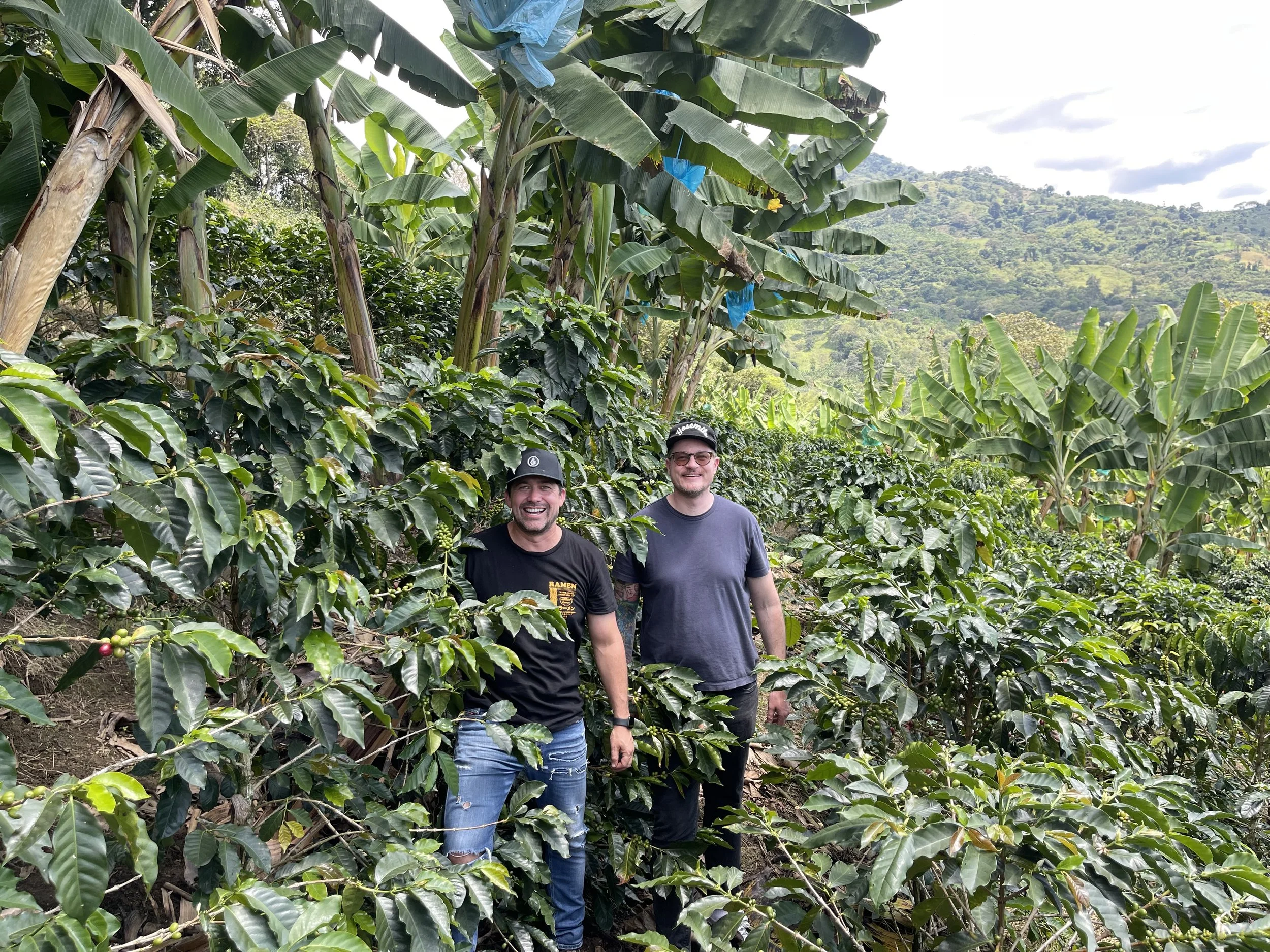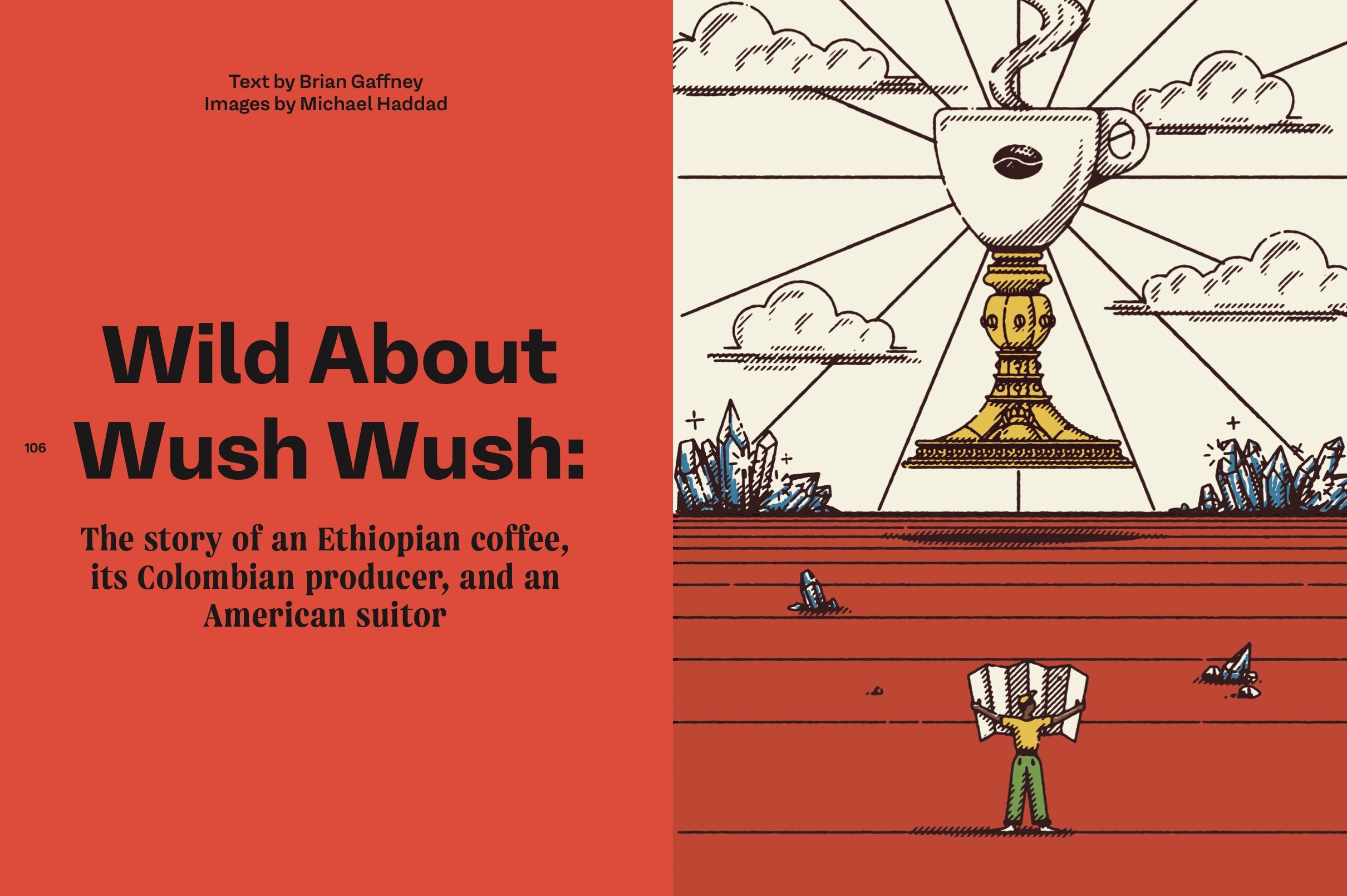STANDART × duck-rabbit coffee
It is our great privilege and honor to work with Standart to bring this amazing coffee from Edwin Noreña to the Standart community. It is a project long in the making and it fills us with joy and much satisfaction to see it come to fruition and the coffee making it into cups across the globe.
When this project first came about we knew we wanted to deliver something unique, exciting, delicious, and special. Edwin was top of mind of producers to work with. Not only is Edwin a close friend, but he has produced some of the most outstanding and preconception shattering coffees we have tasted and offered. So, we were thrilled when Edwin was enthusiastically onboard for the project.
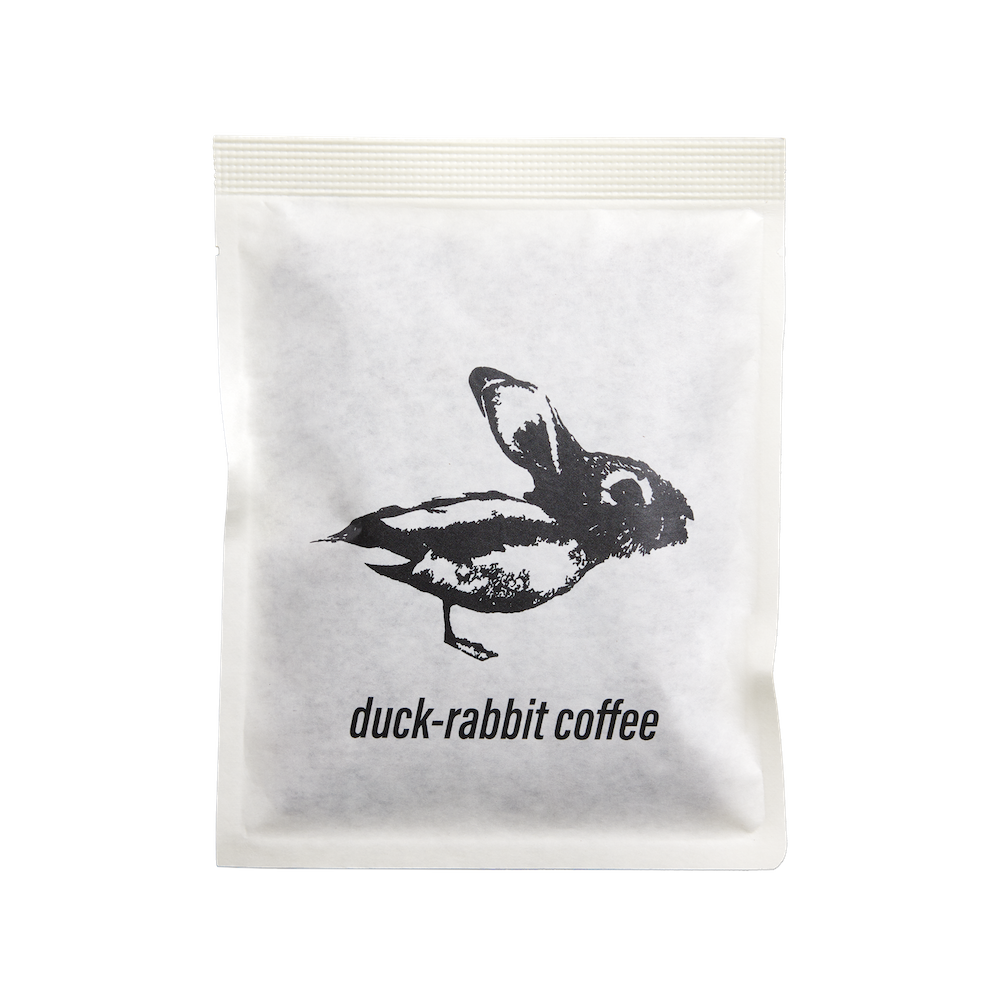

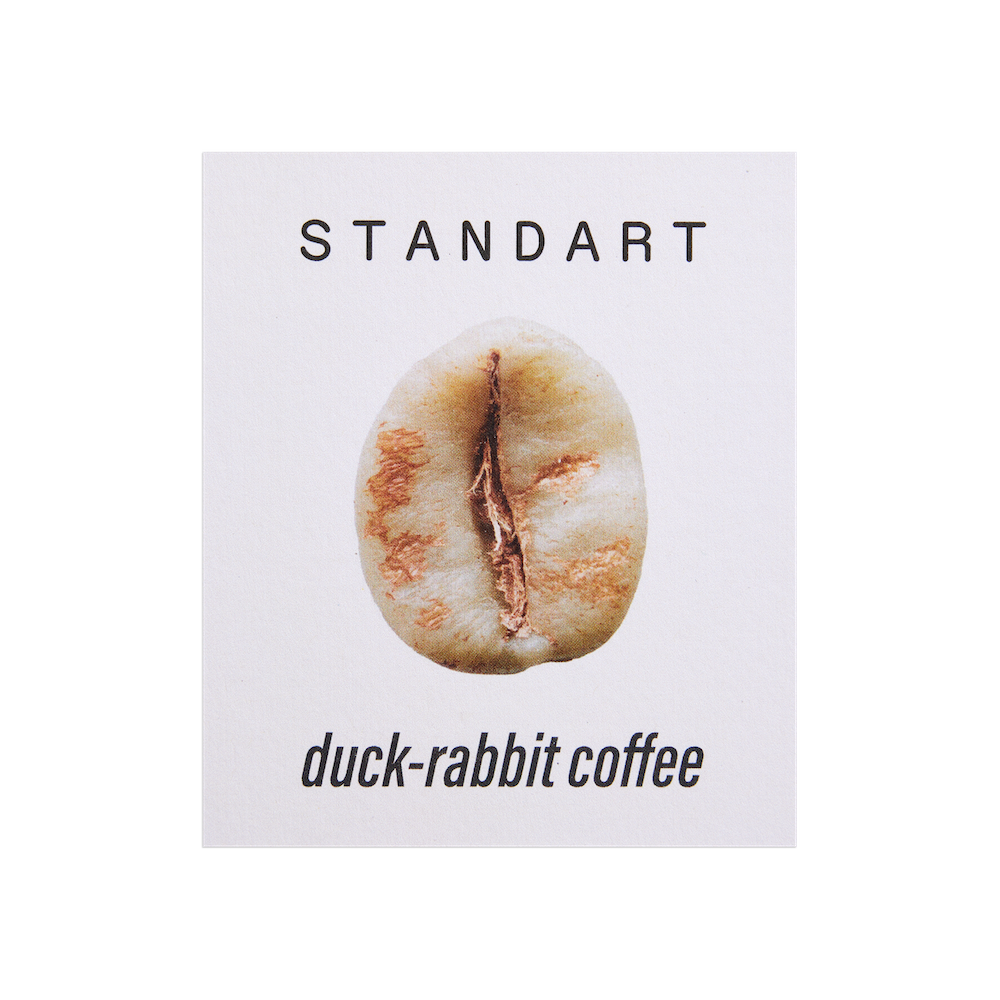
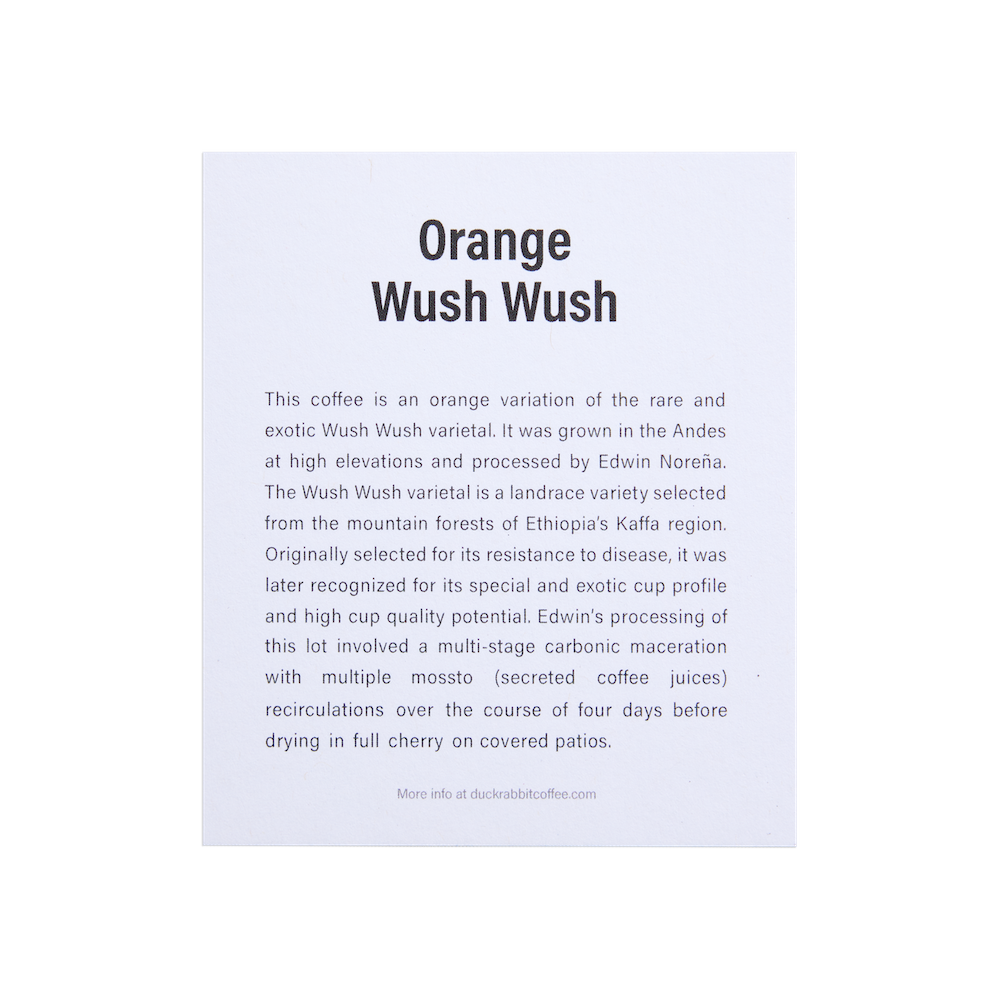
After deliberation, sampling, and a trip to Edwin's farm, we arrived at this particular processing method of the Orange Wush Wush varietal. We found this coffee to be unlike anything we have had before. We also liked that we would be offering a varietal and processing method that would likely be new to many people, and we loved the tie-in to Standart's Issue 19 article Wild About Wush Wush: The story of an Ethiopian coffee, its Colombian producer, and an American suitor.
That is how we came about selecting this very special coffee for this very special project. We hope that people enjoy it as much as we do. You can read more about the coffee below. You can read more about our company here. And there is limited amount of the project coffee available for purchase. The product page can be found here.
the coffee
This coffee is an orange variation of the rare and exotic Wush Wush varietal. It was grown at around 1,900 meters above sea level in the San Adolfo area of Colombia's Huila department. Located high in the Andes in southwestern Colombia, Huila is regarded as one of the country's premier coffee growing regions due to its high elevations, warm climate, subtropical forests, plethora of microclimates, and dense population of knowledgable producers.
The Wush Wush varietal is a landrace variety selected from the mountain forests of Ethiopia's Kaffa region. Coffee is native to Ethiopia. Thousands of landrace varietals are thought to grow there. Wush Wush was originally selected for its resistance to disease. Only later was it recognized to have a very special and exotic cup profile and high cup quality potential.
The coffee was harvested by hand and then floated to help identify and sort out any underripe fruit before being bagged up and trucked to Edwin Noreña's farm (Campo Hermoso) in Quindío, Colombia.
Edwin, or la Alquimista, is a processing expert known for pushing the bounds of coffee processing. He is also a 3rd generation coffee producer, trained agronomist, Q-grader, Cup of Excellence judge, and former instructor at Colombia's National School of Coffee Quality.
At Campo Hermoso the coffee spent four days in sealed, CO2 rich tanks undergoing a multiple stage carbonic maceration with multiple mossto recirculations. As the coffee fermented in closed tanks, CO2 -a byproduct of fermentation- filled the tanks and created pressure in the system. Under this pressure the coffee secreted its juices (mossto). The mossto was collected and recirculated a couple times over the course of four days.
Mossto is dense in microbes like yeasts and lactic acid bacterias. Different microbes active in fermentation will bear differently on the cup. The circumstances of fermentation, like temperature and O2 or lack thereof, will favor different sets of microbes. The length of fermentation and mossto exposure time will also have varying affects on the coffee. These are things Edwin is monitoring and manipulating in order to achieve his desired outcome.
It takes a lot of skill, knowledge, experience, and clear intention to undertake such processing techniques with successful outcomes and develop novel approaches as Edwin has. The approach to this coffee was to elevate an already exceptional coffee by amplifying the coffee's special and coveted characteristics like its orange and tropical fruit flavors, berry impressions, vibrance, sweetness, and floral tones.
After fermentation, the coffee, still in its fruit, is dried on covered patios for a couple weeks before it was rested for a month, dry milled, and vacuum sealed.
When the coffee gets to our roastery in Cleveland, we continue to explore and familiarize ourselves with the coffee. We work to figure out what is available in the coffee and what our preferred expression of it is.
The cup is unique, flavorful, complex, vibrant, expressive, and sweet with flavors and impressions most akin to floral tropical fruits, tart strawberries, blackcurrant juice, and orange citrus. The grounds are very fragrant, the brew is perfumed, and the body is syrupy.
Candy-like impressions can also be found. Tropical and berry fruits can present sort of taffy-esque, while citrus notes can come off more like hard candy. Flavors like peach gummy rings can also be discerned. Another facet of the cup seems best described as creamy and buttery type features. Such features can be found in the flavor, aroma, and mouthfeel.
In all, we think that this is unique, delicious, and special cup that can be a challenge to adequately capture in words due to how unique it is.
We are very thankful for all the efforts that went into this great coffee and all the great people we got to work with along the way.



